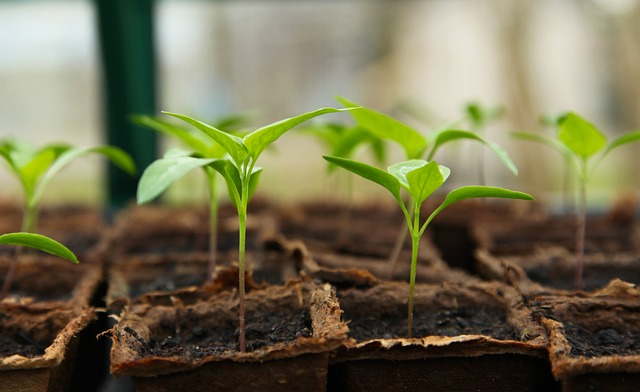Organic Gardening Techniques for Easier Gardening

Gardening is a beautiful blend of art and science, where the symphony of colors and scents dances harmoniously with the delicate balance of nature's mechanisms. Organic gardening, in particular, emphasizes a holistic approach, focusing on nurturing the garden soil, promoting biodiversity, and producing results while avoiding fertilizers or pesticides. By adopting organic gardening techniques, you can create an abundant and healthy vegetable garden that thrives in harmony with the environment.
As we delve into each tip, you'll discover valuable insights, practical advice, and time-tested wisdom to help you overcome common challenges, maximize your yield, and enjoy a flourishing garden throughout the seasons. Whether you have limited space, face unpredictable weather, or crave a deeper connection with nature, these tips will empower you to transform your gardening experience.
So, grab your gardening gloves, dust off your trowel, and prepare to immerse yourself in organic gardening. Let these 30 organic gardening techniques and tips guide you as you embark on a journey filled with wonder, discovery, and the boundless rewards that gardening bestows upon those who embrace its nurturing embrace. Together, we can cultivate bountiful gardens grow healthy plants, and maintain organic production.
30 Organic Gardening Techniques and Tips
Composting:
Create a compost pile from organic materials like kitchen scraps, yard waste, lawn clippings, and plant trimmings to create nutrient-rich compost. You can use it to enrich the soil quality, improve its structure, and provide essential nutrients for plant growth instead of using chemical fertilizers.
Mulching:
Mulching entails wrapping a layer of organic material around the base of plants, such as straw, leaves, or wood chips. This layer helps to maintain soil moisture, suppress weeds by limiting sunlight, and control soil temperature. Mulching adds organic matter to the soil as it decomposes, improving soil fertility.
Manures:
Organic gardening and organic agriculture rely heavily on manures since they are environmentally friendly and effective in boosting soil fertility and supplying plants with nutrients. Manure should be composted or well-rotted before being used in a garden. The potency and potential presence of weed seeds and fungal diseases in fresh manures might be overwhelming. The nutrients in composted manure are released gradually, making it a more stable fertilizer for your vegetable garden.
Crop rotation:
Crop rotation entails rotating crop planting locations each season to prevent pest and disease development. Plant families have different soil nutrients requirements and are subject to different pests and diseases. Rotating crops disrupts pest and disease cycles while maintaining soil fertility by balancing nutrient needs.
Companion planting:
Planting different crops that are mutually beneficial together is known as companion planting. Some plants, for example, resist pests that may harm others, while others attract beneficial insects to help with pest control. Avoid planting large blocks of any single vegetable in the garden. Mixing vegetables prevents the spread and buildup of harmful insects. By supplying a varied selection of plants with varying nutrient requirements, companion planting can help improve nutrient uptake.
Natural pest control:
An organic gardener uses an organic pest control method or organic insecticides rather than chemical spray. These examples are handpicking pests off plants, utilizing traps, or producing organic sprays with components like garlic, horticultural oils, neem oil, or insecticidal soaps. Growing plants that attract predatory insects, such as the small-flowered sweet alyssum and dill, is also a great idea.
Water conservation:
Water conservation measures reduce the amount of water used in the garden to water your plant. Collecting rainwater using a rain barrel allows you to use this free water supply to water plants. Using rainwater instead of tap water saves water and eliminates the need for energy-intensive water treatment. Rain water is free of additives in your tap water.
Drip irrigation:
Drip irrigation systems send water directly to plant roots, reducing water waste from evaporation or runoff. This strategy guarantees that plants receive water exactly where they require it, boosting effective water usage and lowering the danger of water-related diseases such as leaf mold.
Raised beds:
Raised beds are built above ground level, defining growing regions and improving drainage and soil structure. A raised garden bed improves soil composition control, decreases soil compaction, and makes gardening more accessible by minimizing bending or kneeling.
Vertical gardening:
Vertical gardening is growing plants vertically utilizing structures such as trellises, stakes, and vertical containers. This approach makes the most of available space, making it excellent for small gardens or regions with restricted growing space. Vertical gardening also enhances air circulation around plants, lowering disease risk.
Intensive planting:
Plants are spaced tightly together in an intensive planting scheme to maximize productivity. By filling in as much space as possible, you can block the light and nutrients weeds need to grow. Better utilization of available garden area and increased harvests are two benefits of intensive planting.
Crop selection:
Successful organic farming relies heavily on selecting crops that work well in the local environment, like native plants. Choosing plant strains well-suited to your region improves your chances of seeing robust growth, disease resistance, and abundant harvests.
Soil testing:
A soil test can calculate your soil's nutrient content and pH. Using a testing kit or lab analysis, you can learn about nutrient deficiency or excess. Adding organic amendments based on the results can make healthy soil and pH balance.
Organic fertilizers:
An organic gardener uses organic fertilizers instead of chemical or synthetic fertilizers to cultivate their organic garden. Compost, manure, and seaweed are all examples of organic fertilizers that supply plants with slow-release forms of important nutrients. When using these organic gardening techniques, there is no need to worry about chemical burns or water contamination because they strengthen and increase soil fertility, increase the organic matter content, and stimulate healthy growth.
Cover crops or green manures:
Clover, buckwheat, and legumes are examples of cover crop that can be planted during periods of inactivity or between primary crops. When these cover crops are tilled back into the soil, they restrict weed development, stop erosion, enhance soil structure, and supply nutrients.
Vermicomposting:
A technique known as vermicomposting is used to create nutrient-rich vermicompost from organic materials like kitchen waste. This composting is great for home gardens since it yields a concentrated organic fertilizer.
Integrated pest management:
Integrated Pest Management (IPM) is a comprehensive strategy that utilizes cultural, biological, and mechanical approaches to eliminate pests. Organic gardeners can efficiently manage pests while limiting harm to beneficial insects and the environment if they take the time to identify the pests and their life cycles.
Hand weeding:
Routine hand weeding can reduce competition for nutrients, sunlight, and water. Weeds can be effectively managed by hand if you have a small garden or work in an area where heavy machinery is impractical.
Beneficial insects:
Attracting beneficial insects like ladybugs, lacewings, or hoverflies to your garden can help control pests naturally. These insects feed on common garden pests, reducing the need for chemical pesticides.
Natural predators:
Pest numbers can be reduced by fostering the presence of natural predators such as birds, toads, and beneficial spiders. These insectivorous predators help keep your garden's environment in check.
Organic weed control:
Organic weed control methods focus on managing weeds without synthetic herbicides. Techniques like mulching or flame weeding (using controlled flames to kill weeds) and using thick weed barrier can effectively control weed growth and prevent weed seed production.
Season extension:
Season extension techniques, such as using a greenhouse, cold frames, or row covers, allow you to protect plants from frost, extend the growing season, and start planting earlier in spring. These structures provide warmth and shelter to plants, creating a microclimate that promotes growth.
Seed saving:
Save seeds from your vegetable plants for use in the next growing season. This method decreases the yearly expense of buying new seeds while preserving biodiversity and heirloom types.
Organic seed selection:
By choosing organic or non-GMO seeds, you're supporting environmentally responsible farming methods and giving yourself a head start on a vegetable gardens free of harmful chemicals.
Pruning and training:
Pruning is selectively cutting branches from a plant to increase air circulation, direct growth in a desired direction, and foster robust growth. Plants can be protected from pests, given more exposure to light, and made more productive through training methods like trellising and staking.
Natural fungicides:
Fungal illness can be managed without synthetic pesticides when organic fungicides like neem oil or baking soda are used. Plants can be protected from fungal infections with the help of these natural alternatives, which can be used proactively or reactively.
Nutrient-rich compost tea:
Tea made by steeping compost in water to extract healthy bacteria and nutrients is called compost tea. Either as a foliar spray or a soil drench, this nutrient-rich liquid will help your plants thrive.
Natural repellents:
Pests can be discouraged from hurting your plants by using natural repellents such as garlic spray or soap solutions. These repellents reduce the potential for pest infestations by creating unfavorable conditions for bugs or masking the aromas that attract them.
Solarization:
In solarization, garden beds are covered with transparent plastic to retain heat from the sun. Soil diseases, weed seeds, and pests are all killed by the increased soil temperature brought about by this method.
Continuous learning:
Learning never ends: organic gardening necessitates constant study. Learn everything about organic gardening by following the latest techniques through workshops, publications, and local gardening groups. Continuous learning helps you increase your gardening expertise and knowledge.
Conclusion
In conclusion, incorporating organic gardening techniques into your gardening routine can revolutionize how you nurture your plants and create a thriving garden. By implementing these 30 techniques, you can make gardening easier while promoting a more sustainable and environmentally-friendly approach.
From the foundation of composting and mulching to the careful selection of companion plants and the diligent practice of organic gardening offers many benefits. It reduces reliance on synthetic chemicals, minimizes harm to beneficial organisms, improves soil health, conserves water, and fosters biodiversity.
Organic gardening is not just about the result of healthy, delicious produce—it's a journey of continuous learning and discovery. Stay curious, seek out knowledge, and connect with fellow gardeners to exchange ideas and experiences. By following these organic gardening tips, you become a steward of the earth, playing a vital role in nurturing the health of our planet. As you harvest the fruits of your labor, you can take pride in knowing that your efforts contribute to a more sustainable and resilient ecosystem.
Let the beauty of nature guide you, and watch as your organic gardens flourish, bringing joy, nourishment, and harmony to your life. Happy gardening!
